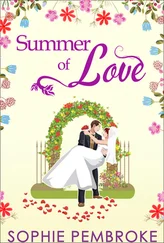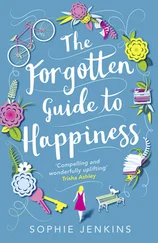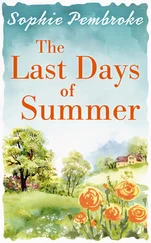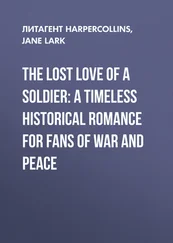Tolstoy cared about the details you couldn’t touch, too. Details like a mood, or a blush, or a silence. Details like time. Nabokov said that Tolstoy was the only writer whose watch keeps time with the numberless watches of his readers . His prose keeps pace with our pulses . He knew slow time. The time it takes for two men to choose their dinner in a Russian-French restaurant. The time it takes to adjust a hat in a hallway mirror. The timing of a pause in conversation, when one person attempts to bring up a difficult subject, and the hesitation as the other looks away. The way time hangs heavy for those in love.
Anna’s time is governed by others. She is a moving character, forever coming and going, subject to other people’s clocks, never quite at home. This time, this now, she is on a visit to her brother in Moscow, leaving her own family, her husband and son, in St Petersburg. As it draws towards six o’clock, the sky turns from pearly grey to black. She sees the frosted conifers from the window, dark bottle-green. The ground is a white blanket, with patches of rough grass pushing up through the snowy verge like so many undone chores.
Across the aisle, a woman is reading a magazine article about the wonders of river cruising, eating a Kinder Bueno. Her T-shirt says something about love in curly writing. Her neighbour is folding up a small kite and putting it into her rucksack. A man stands, leaning against the seat as he checks his phone. Looking down the aisle, I see a row of elbows receding into the distance, with a mess of bag straps hanging down from the overhead shelf. Wifi is not available.
As we speed up past the drainage canals and conservatories filled with cactuses, I see a station appear and disappear too quickly for me to read the name, the letters blurring to a streak on the sign placed in a stretch of rainyday concrete. It was somewhere. The unreadable somewheres. Those are the lost places, the ones I never get to or, at least, never get off at. You can see them down the timetable. Hessle, Ferriby, Broomfleet, Thorne North. It’s one of them there, vanishing into the distance like a half-grasped memory. But the sense of loss, the feeling that you might have left something behind in the cloakroom, is displaced by the reassuring forward movement of the train.
For a moment, we all travel at the same speed. Or are stationary together. Nonstop services give you this feeling more intensely. On a train, perhaps more intensely than on any other form of transport, our spatial and temporal responsibility is gone, our destination preordained.
It’s just an illusion, of course. The train driver could suddenly decide that she wanted to stop. The train could break. It could blow up. I could jump out of the window. We could crash. It’s happened. One Valentine’s Day morning in 1927, the incoming 7.22 from Withernsea smashed into the 9.05 to Scarborough. The British Pathé footage shows ten men in bowler hats and raincoats inspecting the wreckage, the smoke from their cigarettes rises in spirals against the mist. A front engine is half-telescoped, a carriage smashed, open to the air. Trains are driven by people not machines, and that Valentine’s Day one person pulled the wrong signal lever. First nine dead. Then twelve. Human error.
My train is a safe place. I cannot be lost. The lady cannot vanish, except by a kind of illusion. The trajectory is set, and, as we power forwards, we look into something like a fixed future. Time is out of my hands, and, for that reason, for now, I feel free.
I cannot hold it, or hold it up.
— 2003 —
Having lunch in your flat for the first time, I rearrange my body as I eat, trying to work out which way I should sit. Leaning in, leaning out, leaning forward on the table to express interest, then back again in the chair, my hands neatly folded. Seen through a lens, we would have made an uncomfortable picture: dimly lit, bad angles.
I wonder where I should put myself.
Your images on the walls around me have no such trouble. A large canvas propped against the left-hand wall near the doorway. Careful still lives, stacked against each other, waiting to be taken for a hanging. A picture of what I think is a plate and a jug. Sturdy and weighted. You liked to look at objects and the ways they were positioned, one against another. The placement and arrangement. The spaces between.
I sit and try to work out the years between us. Over thirty, whichever way you counted. Years that meant not just time, but marriage, children, money, friends – all of which were unknown. I was just starting out. You were just starting to retire.
After a bit, a meal of steak and salad. (I tried to look not hungry.) It was the only time I saw you cook. Strawberries for afters, but we skipped them.
— 2016 —
people who make art … cannot do it blind.
You cannot do it by looking at a toaster.
Sheila Heti, ‘On the Subject of Artists Talking About Art’
What do happy families look like? I think through the cards in the pack. Mr Bun the Baker, Mrs Chip the Carpenter’s wife, Master Soot, the Sweep’s son. Neat groups of four, matching sets fitting neatly into the palm of your hand.
Fitting together is harder than it looks. It’s worst in the morning, as my family gropes its way towards various syncopated goodbyes. At some point, during toast and juice supervision, I run upstairs to pull on some clothes. Fishing around for a dress with no waist, and a pair of earrings, then hunting through the dirty-clothes basket for a pair of tights and finding some with a (painfully constricting) hole in the toe. I make my way to the front door, tripping over assorted shoes and a collapsing toy pram. My son stands by the front gate and asks if he can play Minecraft. I wonder when I last took the time to comb his hair. To read him a book. How much time is it fair to take? How much belongs to me? The question wheels in my mind, like a foot in mid-air, between platform and rails. I want to fall.
No more sombre enemy of good art than the pram in the hall . So said Cyril Connolly. This is a fundamental misunderstanding of childcare equipment. With a pram there’s movement. A pram-pusher can think, walk and carry baggage. And there’s a chance that the pram’s occupant might go to sleep. Prams don’t even have to be taken out for an airing. They can be rocked up and down a hallway with a laptop in the hood and a paragraph has a possibility of being born. Other things get in the way of art. Laundry. The school run. Plates of food that always seem to need clearing away. The clutter on the living-room floor. The tidying up, and the nits, and the compromise. These are the things that get in the way. Along with the bills and the boiler maintenance. The train set’s wooden circle, its level crossings, its half-built bridge. The half-eaten fish finger on the plastic plate (not mine).
It is quiet right now, apart from the sound of engine against track, that familiar juddering, grinding and groaning of metal. Out of the window to my right, the fields, cut across with drainage canals, lakes and spinneys and car parks and Portakabins. I look at the bag of books and papers beside me. This, if I’m lucky, is the beginning of the middle of my life. It is a time when promising thirty-something starts to give way to middling fortysomething – a strange in-between period where horizons and trousers shrink. My nights are spent chasing not men but lost PE kit. Middles can be hard to navigate: we never know exactly where they begin. How should we pace ourselves? Is there a schedule? I scroll through the mental calendar. Ghosts are planted on various pages, next to bank holidays and festivals. My dead teacher. My dead friend. Back to my father. Dead at forty-five, he hovers over each September, a corduroy shade, condemned to perpetual middle age. I imagine the ghost you will soon be.
Читать дальше












